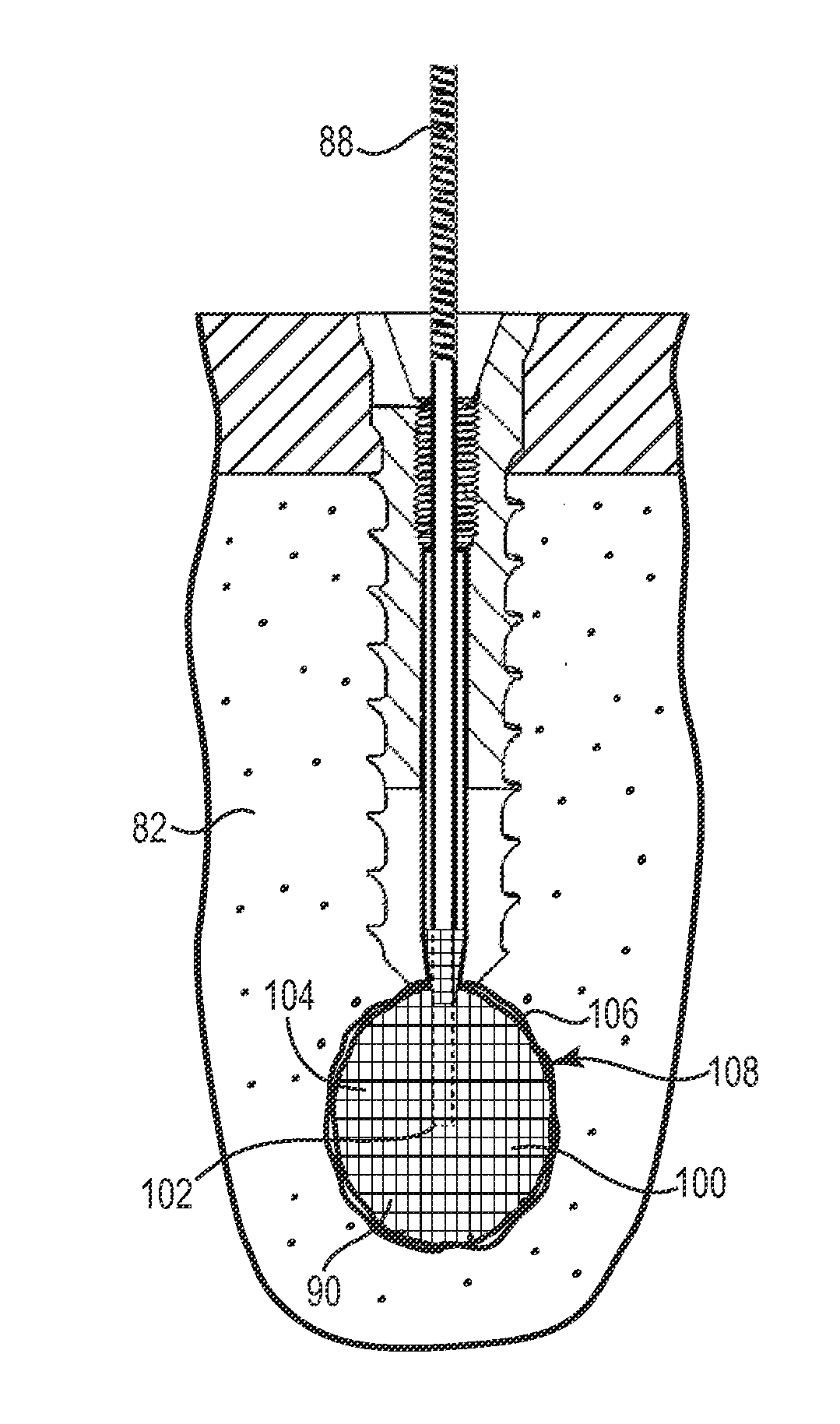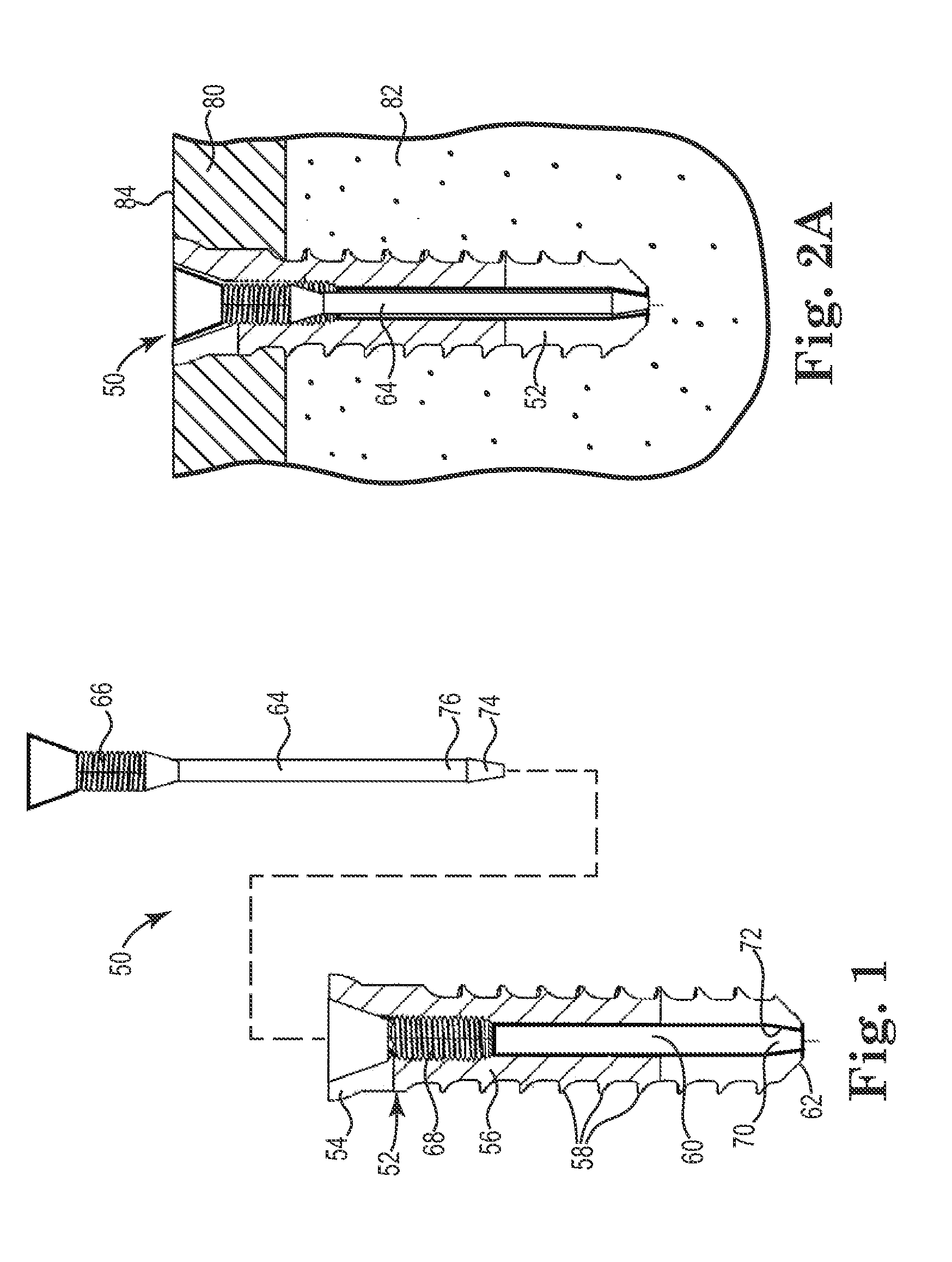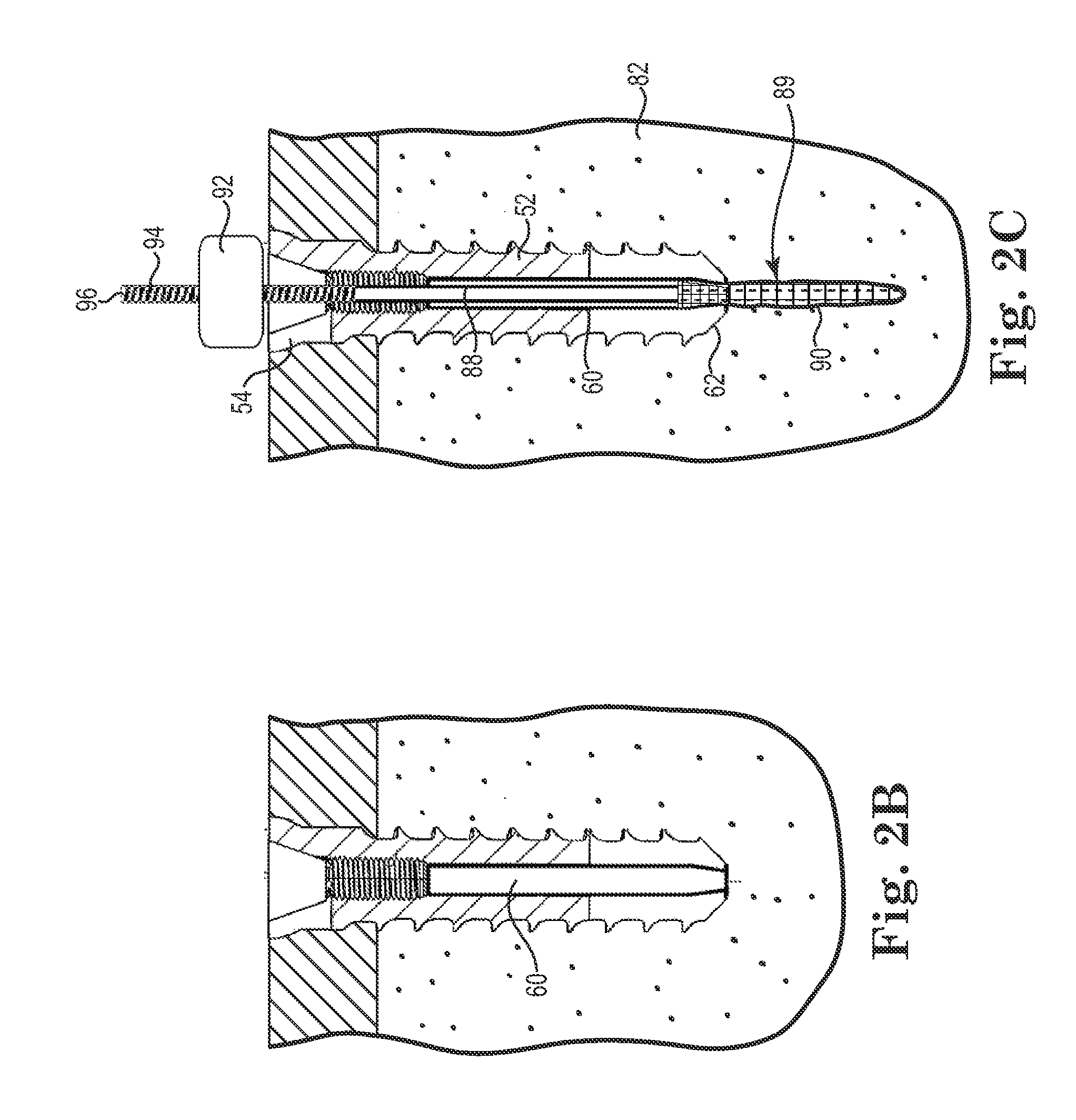Fixation System for Orthopedic Devices
a technology for fixing systems and orthopedic devices, applied in the field of fixing systems, can solve the problems of reducing the structural integrity of the bone, limiting the options for securing the orthopedic implant, and preventing securely re-attaching the orthopedic fastener in the bone, so as to improve the pull out strength of the orthopedic implant, improve the stability of the bone, and ensure the fixation of the orthopedic implant.
- Summary
- Abstract
- Description
- Claims
- Application Information
AI Technical Summary
Benefits of technology
Problems solved by technology
Method used
Image
Examples
example 1
[0218]Four identical fasteners were tested according ASTM standard F543-02 Annex A3 “Test Method for Determining the Axial Pullout Strength of Medical Bone Screws. The test was performed on a solid rigid polyurethane foam 40 millimeters×130 millimeters×180 millimeters block with a density of 20 pounds made according to Specification F1839, purchased from www.sawbones.com as product number 1522-03.
[0219]The fasteners had an outside diameter of about 9.0 millimeters with an outside threaded length of about 17 millimeters. The lumen had an inside diameter of about 6.0 millimeters.
[0220]Four pilot holes about 8.0 millimeters in diameter were drilled completely through the test block. A fastener was secured in each of the pilot holes. A cavity was formed behind the fasteners for Samples C and D using a wire with a bent tip attached to a cordless drill and inserted through the lumen of the fasteners. The drill was run at a moderate speed for about 20 seconds for each Sample.
[0221]Samples ...
example 2
[0226]Four fasteners were tested according ASTM standard F543-02 Annex A3 “Test Method for Determining the Axial Pullout Strength of Medical Bone Screws, to evaluate a fixation structure having a ribbon shape.
[0227]The test was performed on a solid rigid polyurethane foam 40 millimeters×130 millimeters×180 millimeters block with a density of 20 pounds made according to Specification F1839, purchased from www.sawbones.com as product number 1522-03.
[0228]Pilot holes for Samples E and F had a diameter of about 6.3 millimeters and pilot holes for Samples G and H had a diameter of about 4.5 millimeters.
[0229]The fasteners for Samples E and F had an outside diameter of about 6.0 millimeters with an outside threaded length of about 11.0 millimeters. The lumen had an inside diameter of about 5.0 millimeters.
[0230]The fasteners for Samples G and H had an outside diameter of about 5.0 millimeters with an outside threaded length of about 9.0 millimeters. The lumen had an inside diameter of abo...
example 3
[0235]Three fasteners were tested according ASTM standard F543-02 Annex A3 “Test Method for Determining the Axial Pullout Strength of Medical Bone Screws, to evaluate a fixation structure having a ribbon shape.
[0236]The test was performed on a solid rigid polyurethane foam 40 millimeters×130 millimeters×180 millimeters block with a density of 20 pounds made according to Specification F1839, purchased from www.sawbones.com as product number 1522-03.
[0237]Pilot holes for Samples I, J, and K with a diameter of about 6.0 millimeters were drilled into the test block at a depth of about 2× the length of the fasteners, about 22 millimeters.
[0238]The fasteners for Samples I, J, and K had an outside diameter of about 6.0 millimeters with an outside threaded length of about 11.0 millimeters. The lumen had an inside diameter of about 5.0 millimeters.
[0239]A cavity was formed behind the fasteners for Samples J and K using a bent wire attached to a cordless drill inserted through the lumen of th...
PUM
 Login to View More
Login to View More Abstract
Description
Claims
Application Information
 Login to View More
Login to View More - R&D
- Intellectual Property
- Life Sciences
- Materials
- Tech Scout
- Unparalleled Data Quality
- Higher Quality Content
- 60% Fewer Hallucinations
Browse by: Latest US Patents, China's latest patents, Technical Efficacy Thesaurus, Application Domain, Technology Topic, Popular Technical Reports.
© 2025 PatSnap. All rights reserved.Legal|Privacy policy|Modern Slavery Act Transparency Statement|Sitemap|About US| Contact US: help@patsnap.com



